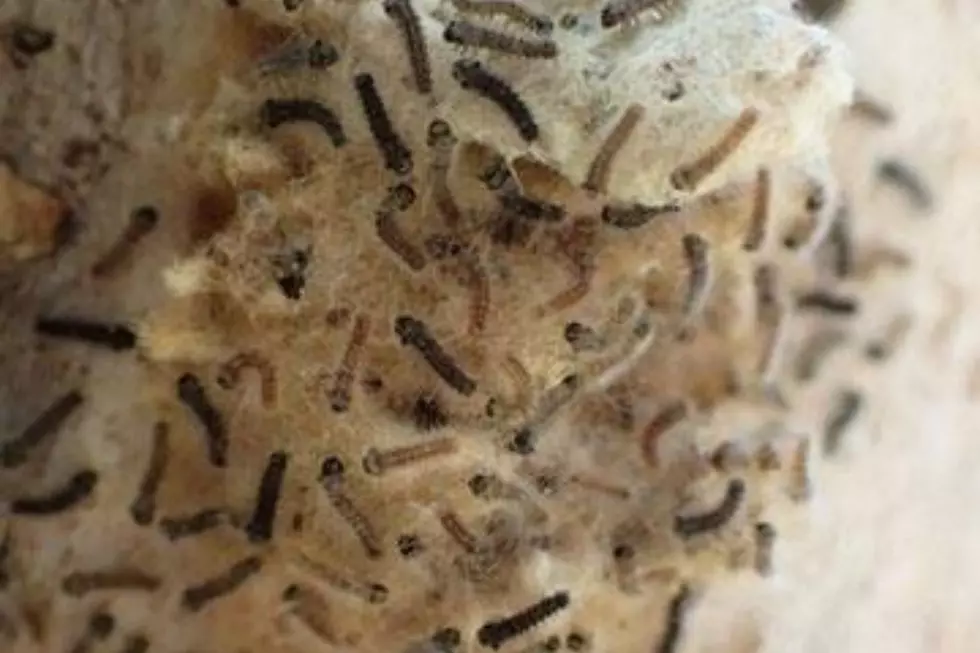
Poisonous Caterpillars Invade New York: How to Kill Them
An invasion of tiny caterpillars that are killing trees and causing dangerous allergic reactions is driving New York homeowners to desperate measures.
Nicole was trying to enjoy the recent warm weather in her Hudson Valley backyard when she felt small pieces of what she thought was dirt falling all over her head, shoulder and arms. Upon further inspection, she was horrified to discover that the debris was actually tiny little caterpillars that were crawling all over her body.
This unpleasant scenario only got worse after Nicole learned what these tiny creatures would soon do to her beloved family home.
Millions of Spongy Moths Threaten New York Homeowners
2024 has already proven to be an especially bad year for spongy moths. Formerly known by the insensitive name "gypsy moth", the invasive species was brought to America from France over 100 years ago in an attempt to breed them with silkworms to create stronger fabric.
Unfortunately, the breeding experiment didn't work and some of the caterpillars escaped into the wild. The invasive species quickly exploded in numbers and spread into other states. Today, the spongy moth is part of the ecosystem and every dozen or so years experiences a major outbreak. Thanks to a smaller number of predators and an especially warm winter, the moths are reproducing in record numbers this year.
The destructive insect starts its life as a tiny hatchling caterpillar. Only a quarter-inch long, these tiny little soldiers descend from trees in the thousands on thin, silken threads. Blown by the wind, they spread out to other trees (and sometimes people) to begin their lifecycle.
By June, these tiny caterpillars will grow to over two inches, hungrily devouring leaves, resulting in damaged and completely bare trees. While oak trees can survive one or two years of being wiped of its leaves, other trees like pine will usually die after a massive infestation of spongy moths.
How to Eliminate Spongy Moth Caterpillars From Your Home.
Unfortunately, it's extremely difficult to completely eradicate a massive invasion of spongy moths. The best way to control their population is to look for egg masses on trees in the winter and destroy them. However, manually going from tree to tree to find and remove these masses is just too time-consuming to be practical. Simply scraping them off and letting them fall to the ground will not kill the insects inside, so the sacks need to be collected and destroyed.
ALSO: Hudson Valley Overrun By Mysterious, Painful Bug Bites
If you already have an explosion of caterpillars on your trees, the Cornell College of Agriculture and Life Sciences suggests squishing them or collecting the caterpillars in soapy water. Homeowners should take precautions against touching spongy moths with their hands. Their hairy spines contain histamines which can cause a terrible allergic reaction. Some people have seen their arms and faces blow up and turn bright red after coming in contact with the invasive species.
Some homeowners have resorted to destructive measures like setting the insects and their egg sacks on fire in an effort to eradicate spongy moths. Flamethrowers actually do more damage to the trees than the caterpillars would after hatching. Insecticides can also be ineffective because they wipe out the caterpillars' natural predators, allowing them to increase in numbers next year.
One effective and easy way to control the caterpillar population is to wrap the tree with a burlap band covered in a sticky substance to catch them as they travel up the trunk.
Have you seen an increase in spongy caterpillars this year? Let us know where you live and how many insects you've experienced by dropping us a message on our Facebook page or through our mobile app.
Watch Out For These 5 Dangerous Invasive Pests In New York State
Gallery Credit: Yasmin Young
Asian 'Destructive Invasive Pest' Spotted All Over New York, Hudson Valley
More From WPDH-WPDA









